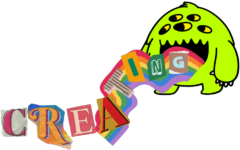In the book’s opening chapter, the author delves into the inner workings of our minds and explores the advantages and drawbacks of our pattern recognition and self-organizing system. According to the author, our minds seek patterns to comprehend the world around us. When processing our sensory experiences, our minds distill the information into concise codes, enabling us to categorize and make sense of the patterns we encounter. This inclination towards pattern matching makes magic tricks, riddles, and visual illusions so captivating.
The system our minds employ carries inherent benefits. The network of patterns within our minds can store vast information, and retrieving frequently used patterns is swift and effortless. However, the author also raises concerns about the potential downsides of this system. One of these downsides is the tendency to become entrenched in rigid thought patterns, which can hinder our ability to think creatively and adapt to new situations. Additionally, the challenge of altering existing patterns to gain fresh insights can impede our progress. Moreover, the difficulty of connecting information across different patterns poses its own set of obstacles.
By shedding light on the workings of our minds, the author prompts us to consider both the advantages and disadvantages of our pattern recognition and self-organizing system. Understanding these intricacies can empower us to harness the benefits while mitigating the limitations.
